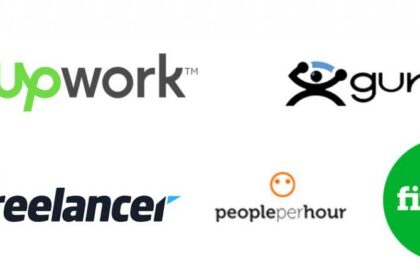In a world where the boundaries between work and leisure blur, mastering the art of time management has never been more essential—especially for freelancers. With the freedom to choose when, where, and how to work comes the daunting responsibility of making every tick of the clock count. Whether you’re juggling multiple clients, navigating project deadlines, or carving out time for personal pursuits, the ability to effectively manage your hours is key to achieving both productivity and balance. In this article, we will explore practical and innovative time management tips tailored to the unique challenges faced by freelancers. By harnessing the power of your clock, you’ll not only elevate your work performance but also enhance your overall well-being. Join us on this journey to reclaim your time and transform your freelance career from a whirlwind of chaos into a symphony of order.
Freelance Writing
offers flexibility that many crave, but it also brings unique challenges in managing time effectively. To thrive, it’s essential to cultivate a routine that propels productivity instead of hindering it. Establish a designated workspace that minimizes distractions, ensuring that your creative juices flow with minimal interruptions. Try to set specific hours for writing, treating them as non-negotiable appointments. Use tools like calendars, timers, or apps designed for time management to help you track your progress and stay on course.
Another strategy to enhance your time management skills is to prioritize tasks. This doesn’t mean winging it; rather, create a list of writing projects and categorize them based on urgency and importance. Implementing the Eisenhower Matrix can effectively aid in this process. Below is a simple visualization of how you might categorize tasks:
| Task Type | Action |
|---|---|
| Urgent & Important | Do it now |
| Important but Not Urgent | Schedule it |
| Urgent but Not Important | Delegate it |
| Neither Urgent nor Important | Eliminate it |
By mastering these techniques, you can efficiently carve out time for creativity while meeting deadlines, allowing you to flourish as a freelance writer.

Freelancing Platforms
In the fast-paced world of freelancing, using platforms tailored for independent professionals can significantly enhance your efficiency and productivity. These digital marketplaces not only connect you with potential clients but also offer tools designed to streamline your processes. Successful freelancers often leverage features such as built-in invoicing, project management tools, and communication systems that can help in managing client expectations and maintaining clear deadlines. Some popular platforms include:
- Upwork – A leading platform where freelancers can showcase their skills and bid on projects across various industries.
- Fiverr – Allows you to create service listings, letting clients find and purchase your services directly.
- Freelancer – Offers a broad range of job categories and a competitive bidding system for freelancers.
- Guru – Provides secure payment options along with tools for collaboration and project management.
Managing time is crucial, and the right platform can greatly influence your workflow. By utilizing a platform with an integrated schedule tracker, you can map out your tasks and ensure all projects are progressing smoothly. Additionally, some platforms feature analytics that let you analyze your productivity patterns, helping you identify peak working hours and periods of downtime. The following table highlights some of the essential tools provided by these platforms that can aid in effective time management:
| Platform | Key Features |
|---|---|
| Upwork | Time tracking, milestone payments, client messaging |
| Fiverr | Service listings, buyer requests, deadline alerts |
| Freelancer | Bidding system, calendar integration, project timelines |
| Guru | Work room collaboration, task management, invoicing |

Freelance Graphic Design
Effective time management is crucial for ers who juggle multiple projects and clients. Establishing a structured schedule can empower you to meet deadlines while still maintaining your creativity. Here are some strategies to consider:
- Prioritize Tasks: Identify which projects are urgent and important. Use a priority matrix to visually organize tasks by impact and deadline.
- Set Time Blocks: Divide your workday into focused intervals. Tools like the Pomodoro Technique can help you concentrate better.
- Limit Distractions: Create a workspace that minimizes interruptions—phones, notifications, and other distractions can be detrimental to productivity.
To visualize your time allocation, consider using a simple table that tracks project hours:
| Project | Hours Allocated | Status |
|---|---|---|
| Client A Branding | 10 | In Progress |
| Website Design for Client B | 15 | Pending |
| Social Media Graphics For Client C | 8 | Completed |

Freelance Web Development
For freelancers in web development, effectively managing your time can make or break your success. It’s essential to cultivate a structured routine that allows for flexibility while keeping productivity at its peak. Consider implementing the Pomodoro Technique—working in focused bursts followed by short breaks—to enhance concentration and stave off burnout. Additionally, utilize digital tools like Trello or Asana to keep track of tasks, deadlines, and project specifics, allowing you to visualize your progress and prioritize effectively.
Another vital strategy is to set clear boundaries around your working hours. Establishing a designated work environment, whether at home or in a co-working space, can significantly enhance your mindset and productivity. Maintain a work-life balance by creating a set schedule and communicating your availability to clients. Here’s a simple table to illustrate how to allocate your time effectively during a typical workday:
| Time Block | Activity |
|---|---|
| 9:00 AM – 11:00 AM | Client Meetings |
| 11:00 AM – 1:00 PM | Development Work |
| 1:00 PM – 2:00 PM | Lunch Break |
| 2:00 PM – 4:00 PM | Code Review & Testing |
| 4:00 PM – 5:00 PM | Email & Admin Tasks |

Freelance Marketing Consultant
As a , optimizing your time is essential for maintaining productivity and ensuring client satisfaction. Here are some effective strategies to help you manage your time more efficiently:
- Set clear goals: Define your short-term and long-term objectives to guide your focus.
- Time blocking: Allocate specific time slots for different tasks to minimize distractions.
- Prioritize tasks: Use a priority matrix to distinguish between urgent and important tasks.
- Use productivity tools: Apps like Trello or Asana can help keep track of your projects and deadlines.
In addition to these strategies, maintaining a work-life balance is crucial for a successful freelance career. Implementing the following practices can enhance your overall efficiency:
- Set boundaries: Clearly communicate your availability to clients and stick to it.
- Regular breaks: Take short breaks to recharge and boost creativity throughout your day.
- Reflect weekly: Review your accomplishments each week, adjusting your strategies as needed to stay aligned with your goals.

Freelancing for Beginners
Starting your freelancing journey can feel overwhelming, especially when it comes to managing your time effectively. Understanding how to allocate your hours can spell the difference between thriving in your new career and feeling stressed out. A few foundational strategies can help you take control of your schedule:
- Set Clear Goals: Define what you want to achieve both in the short and long term.
- Use a Planner: Whether digital or paper, a planner can help you visualize tasks and deadlines.
- Prioritize Tasks: Learn to distinguish between urgent and important tasks to streamline your workflow.
- Establish Routines: Create consistent work hours to develop a professional mindset.
Moreover, embracing various tools can enhance your time management skills. Consider using apps for tracking time, setting reminders, or even blocking distractions. Here’s a simple overview of useful tools you might explore:
| Tool | Purpose |
|---|---|
| Toggl | Time tracking |
| Asana | Task management |
| Focus@Will | Music for concentration |
| RescueTime | Productivity analytics |

Freelance Project Management
Effective time management is essential for success in . Balancing multiple clients and deadlines requires not just careful planning but also a proactive approach to productivity. One strategy is to establish clear project timelines at the outset. This helps in setting client expectations and reduces the chances of last-minute rushes. Consider utilizing tools that allow you to create visual timelines or Gantt charts, as they can provide a snapshot of your workload and facilitate better communication with clients.
In addition to timelines, it’s important to prioritize tasks wisely. Utilizing techniques such as the Eisenhower Matrix can help freelancers distinguish between what is urgent and what is important, allowing them to focus on high-impact activities. Here’s a concise breakdown of how to categorize tasks:
| Category | Description |
|---|---|
| Urgent & Important | Tasks that require immediate attention. |
| Important but Not Urgent | Tasks that can be scheduled for later. |
| Urgent but Not Important | Tasks that can be delegated to others. |
| Not Urgent & Not Important | Tasks that can be eliminated. |
By clearly defining and categorizing your tasks, you can maintain focus while ensuring that you’re not overwhelmed by less important work. Regularly reviewing your priorities will allow you to adapt your strategies as projects evolve, leading to more efficient and successful outcomes.

Remote Freelance Jobs
In the ever-evolving landscape of , mastering your time management skills is essential for maximizing productivity. Unlike traditional office settings, freelance work offers unparalleled flexibility—this can be both a blessing and a curse. To harness the freedom effectively, consider breaking your day into focused blocks of time. Implement techniques such as the Pomodoro Technique, where you work for 25 minutes and then take a 5-minute break to recharge. This not only helps maintain your focus but also maintains a sense of structure in your day.
Establishing a dedicated workspace can significantly enhance your ability to concentrate. Make sure your environment is free from distractions and tailored to your working style. To further streamline your workflow, keep a checklist to outline daily tasks. Here are some key practices to consider:
- Prioritize Tasks: Use tools like Eisenhower Matrix to distinguish between urgent and important work.
- Set Boundaries: Define work hours to minimize interruptions.
- Leverage Technology: Use apps like Trello or Asana to manage tasks and deadlines.
| Time Management Technique | Benefits |
|---|---|
| Pomodoro Technique | Boosts focus and reduces burnout |
| Time Blocking | Makes the most of every hour in the day |
| Task Batching | Increases efficiency by grouping similar tasks |

Freelance Photography
is not just about capturing stunning images; it’s also about managing your time effectively to ensure you can meet deadlines while maintaining creativity. One effective strategy is to create a photography schedule that includes dedicated blocks for shooting, editing, and marketing your work. This structured approach not only helps you to stay organized but also minimizes stress and enhances productivity. Consider using tools and apps that aid in scheduling and reminders, allowing you to allocate time wisely across various tasks.
Another crucial aspect of time management is setting realistic client expectations regarding deliverables. Clear communication is key; establish timelines upfront and keep clients informed of your progress. Additionally, develop a habit of reviewing your workload regularly and adjusting priorities as needed. Here’s a simple table to outline essential tasks and estimated completion times for an average project:
| Task | Estimated Time |
|---|---|
| Initial Client Consultation | 1 Hour |
| Shooting Day | 4-8 Hours |
| Editing Photos | 2-5 Days |
| Client Review and Revisions | 1-2 Days |
| Final Delivery | 1 Hour |

Freelance Video Editing
Time management for a freelance video editor is crucial to hone your skills and meet client expectations while maximizing productivity. Setting specific work hours can provide a structured environment, allowing you to balance your project load effectively. Consider these strategies:
- Prioritize tasks based on deadlines and project complexity.
- Break projects into smaller milestones to track progress and maintain motivation.
- Utilize time-blocking techniques to allocate focused sessions for editing and revisions.
Moreover, using the right tools can enhance your time management significantly. Software options like Trello, Asana, or even simple to-do lists can keep your workflow organized. You might also find the Pomodoro Technique beneficial; work in short bursts with scheduled breaks to recharge your creativity. Below is a comparison of productivity tools that might cater to your needs:
| Tool | Features | Price |
|---|---|---|
| Trello | Visual task management with boards. | Free / Paid options available |
| Asana | Team collaboration and project tracking. | Free / Premium plans available |
| Todoist | Simplistic task lists and reminders. | Free / Paid versions available |

Freelance Social Media Manager

Freelance SEO Expert
As a , effectively managing your time is not just a skill; it’s a vital strategy that can elevate your career. With multiple clients and constant updates in algorithm changes, the ability to prioritize tasks is crucial. Consider implementing time-blocking techniques where you allocate specific hours of your day to different projects, allowing for deep focus without distractions. Here are some methods to enhance your time management:
- Set clear deadlines: Define realistic timelines for every project to keep your work on track.
- Use project management tools: Leverage software like Trello or Asana to organize tasks and milestones.
- Break tasks into smaller chunks: Divide complex SEO projects into manageable parts to avoid feeling overwhelmed.
Another important aspect of time management is tracking how you spend your hours. This not only helps you understand your productivity patterns but also allows you to identify areas for improvement. By assessing your performance, you can make informed decisions to optimize your workflow. You might find it beneficial to keep a simple log of daily activities:
| Task | Time Spent | Notes |
|---|---|---|
| Keyword Research | 2 hours | Identified long-tail keywords |
| On-Page Optimization | 3 hours | Updated meta tags and content |
| Client Reports | 1 hour | Prepared performance overview |

Freelance Copywriting
Time management is essential for freelance copywriters striving for success. To maximize productivity, consider adopting strategies tailored to your unique workflow. One effective approach is the Pomodoro Technique, where you work in focused bursts of time followed by short breaks. This not only enhances focus but also helps prevent burnout. In addition, setting clear goals and deadlines can provide much-needed structure, enabling you to prioritize tasks based on urgency and importance. To keep the momentum going, track your progress regularly and adjust your plans accordingly.
Another vital aspect of managing your time efficiently is creating a dedicated workspace. A designated environment can minimize distractions and signal your brain that it’s time to work. Here are some tips to enhance your workspace:
- Declutter: Keep your workspace tidy to maintain clarity and focus.
- Lighting: Utilize natural light to reduce eye strain and increase mood.
- Tech Setup: Invest in ergonomic equipment to promote comfort during long writing sessions.
- Consistency: Stick to a routine schedule to cultivate a productive mindset.

Freelance Business Tips
Managing your time effectively is crucial to thriving as a freelancer. One of the best ways to start is by establishing a consistent daily routine. This includes setting specific working hours and sticking to them as closely as possible. By avoiding distractions and creating a dedicated workspace, you can help your mind transition into work mode. Consider utilizing tools like calendars and task management apps to keep track of deadlines and priorities. Here’s a quick list of tools that can facilitate your time management:
- Trello: For task organization and project tracking.
- Pomodoro Timer: To maintain focus with timed sessions.
- Google Calendar: For scheduling and reminders.
Additionally, remember to assess and adjust your time management strategies regularly. Using a method like the Eisenhower Matrix can help prioritize tasks based on urgency and importance, ensuring you invest your time where it matters most. To better visualize this method, consider the table below:
| Urgent | Not Urgent |
|---|---|
| Important Tasks | Schedule these tasks |
| Delegate or eliminate | Prioritize these for later |
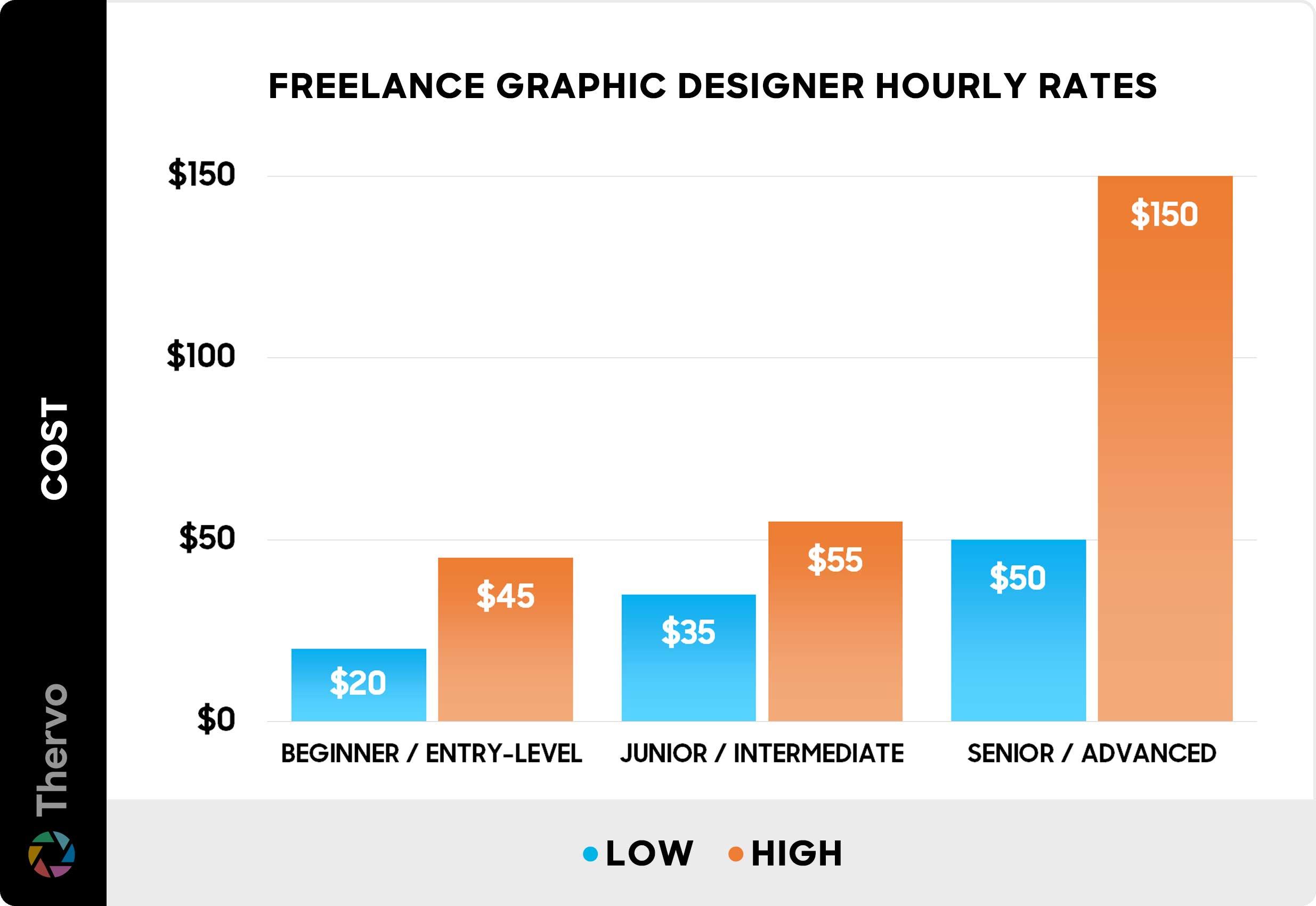
Freelance Rates and Pricing
Setting your freelance rates requires a delicate balance between market standards and personal valuation. One effective strategy is to conduct thorough research on industry benchmarks. This empowers you to define your worth based on specific skills and expertise. Consider the following factors when determining your pricing:
- Experience Level: Adjust your rates according to your years in the field.
- Project Complexity: More complex projects may demand higher rates.
- Client Type: Corporate clients often have larger budgets than startups.
- Geographic Location: Rates can vary significantly across regions.
Moreover, adopting a flexible pricing model can enhance your attractiveness to potential clients. For instance, you might choose between hourly rates and fixed project fees based on the specific requirements of each job. Below is a simple comparison of pricing models that can fit various scenarios:
| Pricing Model | Best For | Advantages | Disadvantages |
|---|---|---|---|
| Hourly Rate | Short-term projects | Flexibility in payment | May lead to billing disputes |
| Fixed Fee | Long-term contracts | Clear budget for clients | Increased risk for freelancer |
| Retainer | Ongoing services | Stable income stream | Requires commitment |

Building a Freelance Portfolio
Creating a strong freelance portfolio is crucial for showcasing your skills and attracting clients. Start by selecting your best work that highlights your unique style and strengths. Consider including a variety of projects that demonstrate your versatility, such as:
- Graphic Design – Showcases your creativity and technical skills.
- Writing Samples – Illustrates your ability to communicate effectively.
- Web Development – Displays your problem-solving skills and coding expertise.
- Photography – Captures your eye for detail and aesthetic sense.
When crafting your portfolio, ensure each piece is accompanied by a brief description that explains the project’s context and your role in it. This can be enhanced by using a simple layout that guides potential clients through your work seamlessly. Consider utilizing a table format for easy reference, such as:
| Project Title | Type | Description |
|---|---|---|
| Brand Identity Redesign | Graphic Design | Revamped brand visuals for a tech startup, improving their market reach. |
| Blog Series: Travel Tips | Writing | Created engaging articles that boosted traffic to a lifestyle blog. |
| E-commerce Website | Web Development | Designed and developed a responsive site for a local store. |
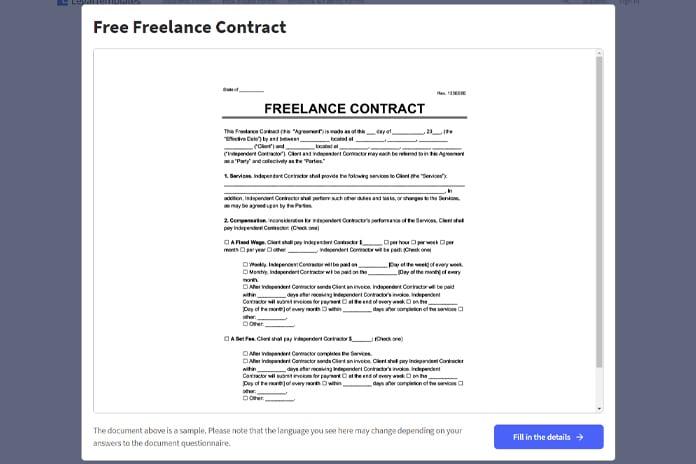
Freelance Contract Templates
Freelance contracts are essential tools that not only protect your rights but also establish clear expectations with clients. Utilizing a well-crafted template can save you time and effort, allowing you to focus on your projects rather than getting bogged down in the details of documentation. When creating contracts, consider including the following key elements:
- Scope of Work: Clearly outline the tasks and deliverables expected.
- Payment Terms: Specify rates, timelines for payment, and methods of payment.
- Confidentiality Clause: Protect sensitive information shared during the project.
- Termination Terms: Detail conditions under which either party can terminate the agreement.
Incorporating these elements not only safeguards your professional endeavors but also fosters a healthy working relationship with clients. Another effective strategy is to customize templates according to the nature of each project. Below is a simple template showcasing basic elements that can be adapted to suit different freelancing situations:
| Element | Description |
|---|---|
| Project Title | Name of the project or service being provided. |
| Client Details | Name and contact information of the client. |
| Timeline | Start and end dates of the project. |
| Signature Lines | Spaces for both parties to sign and date the contract. |

Freelance Time Management
Successfully managing time as a freelancer requires a blend of discipline and strategy. One powerful technique to enhance productivity is the Pomodoro Technique, which encourages you to work in focused bursts followed by short breaks. For instance, you can work for 25 minutes straight, then take a 5-minute break. This rhythm helps maintain high levels of concentration while preventing burnout. Additionally, setting clear, achievable goals for each work session can help steer your focus. Consider using tools like Trello or Asana to track these goals, keeping your tasks organized and visually accessible.
Another effective approach is prioritizing your tasks based on urgency and importance. A useful method for this is the Eisenhower Matrix, which divides tasks into four categories: urgent and important, important but not urgent, urgent but not important, and neither urgent nor important. This segmentation allows you to allocate your time more effectively, ensuring that you’re always working on what matters most. Below is a simple representation of how you might categorize your tasks:
| Quadrant | Tasks |
|---|---|
| Urgent & Important | Client deadlines, urgent revisions |
| Important & Not Urgent | Skill development, networking |
| Urgent & Not Important | Emails, minor tasks |
| Not Urgent & Not Important | Social media scrolling, distractions |

Freelance Networking
Building a robust network is essential for freelancers looking to thrive in a competitive landscape. It’s not just about having contacts; it’s about cultivating genuine relationships that can lead to collaborative opportunities and referrals. Here are some effective strategies to enhance your :
- Attend industry events: Participate in workshops, webinars, or conferences relevant to your field. These platforms not only provide learning opportunities but also facilitate face-to-face interactions.
- Leverage social media: Utilize platforms like LinkedIn, Twitter, and Facebook groups to connect with other freelancers and potential clients. Share valuable insights and engage in discussions to increase your visibility.
- Create a professional portfolio: Ensure your online portfolio is up-to-date and showcases your best work. This serves as a conversation starter and a means for potential clients to assess your skills.
- Join freelance communities: Sign up for coworking spaces or local meetups where freelancers gather. These environments are perfect for exchanging ideas and making valuable contacts.
Incorporating networking into your time management strategy can maximize your productivity and expand your professional connections. Track your networking activities alongside your client work to ensure a balanced approach. Here’s a simple way to organize your networking efforts:
| Networking Activity | Time Allocation | Frequency |
|---|---|---|
| Social Media Engagement | 30 minutes | 3 times a week |
| Networking Events | 2 hours | Monthly |
| Follow-up Emails | 15 minutes | Weekly |
| Local Meetups | 1 hour | Bi-monthly |

Freelancing in Tech
In the fast-paced world of tech freelancing, where deadlines loom large and client expectations soar, mastering your time is more critical than ever. Take a cue from successful freelancers who often employ a range of strategies to ensure they not only meet but exceed their project goals. One effective approach is to implement time-blocking, a method where specific chunks of your day are dedicated to particular tasks. This not only minimizes distractions but also enhances focus, allowing you to dive deep into your work without interruptions. To kickstart your time management journey, consider customizing your calendar with blocks that align with your peak productivity times.
Another essential technique is using task prioritization. With multiple projects in the pipeline, it’s easy to feel overwhelmed. Create a simple visual to categorize tasks based on urgency and importance. A helpful framework might include a simple table:
| Task | Urgency | Importance |
|---|---|---|
| Client A Project | High | High |
| Client B Feedback | Medium | High |
| Networking Event | Low | Medium |
This structured approach not only clarifies your workload but also ensures that you consistently make progress where it matters most. By combining meticulous planning with flexible adaptations, freelancers can not only meet deadlines but thrive in the competitive tech landscape.

Freelance Taxes and Accounting
As a freelancer, understanding the intricacies of taxes and accounting is essential for maintaining financial clarity and compliance. Here are some key points to consider:
- Track Your Income: Keep meticulous records of all income sources, including client payments and side gigs.
- Deductible Expenses: Familiarize yourself with common deductions such as home office expenses, software subscriptions, and travel related to work.
- Quarterly Estimates: Set aside tax payments for quarterly estimates to avoid surprises at tax time.
- Professional Help: Consider working with an accountant who specializes in freelance work to maximize your deductions and ensure you’re compliant with tax laws.
Employing effective cost management strategies can make a significant difference in your financial health. Evaluating your earnings and expenses periodically aids in making informed decisions about your business. Here’s a simple breakdown of common freelance expenses:
| Expense Type | Estimated Percentage of Income |
|---|---|
| Office Supplies | 5% |
| Software and Tools | 15% |
| Marketing and Advertising | 10% |
| Professional Services | 20% |
| Taxes | 25% |

Freelance Client Retention
Building a loyal client base is essential for long-term success in freelancing. To foster strong relationships and improve client retention, consider implementing a few key strategies:
- Consistent Communication: Regular updates and check-ins help keep clients informed and engaged. Utilize tools like email or project management software to streamline communication effectively.
- Exceed Expectations: Delivering work ahead of deadlines or going the extra mile can leave a positive impression. Clients appreciate when you anticipate their needs and provide solutions proactively.
- Solicit Feedback: Regularly ask for client input on your work and processes. This not only demonstrates your commitment to improvement but also makes clients feel valued and involved.
Moreover, establishing clear boundaries is crucial to maintaining a healthy working relationship. Consider setting up a straightforward contract that outlines project timelines, deliverables, and payment terms. This clarity reduces misunderstandings and builds trust. Here’s a quick reference table that outlines essential contract elements:
| Contract Element | Description |
|---|---|
| Scope of Work | Clearly define what tasks are included in the project. |
| Deadline | Specify when each deliverable is due to keep projects on track. |
| Payment Terms | Outline how and when payments will be made. |
| Revision Policy | State how many revisions are included without extra cost. |

Freelancing Full-Time vs Part-Time
Choosing to freelance either full-time or part-time can significantly impact your work-life balance and income potential. Full-time freelancers typically enjoy greater consistency in their workload, allowing for a more stable income stream and the opportunity to build deeper relationships with clients. This pathway often demands rigorous time management skills, as you may juggle multiple projects simultaneously. On the other hand, part-time freelancing can offer you flexibility, allowing you to maintain other commitments, such as a day job or personal projects. This arrangement can reduce the pressure of meeting financial targets, but it may lead to a fragmented schedule that requires careful planning.
When evaluating the pros and cons of each path, consider the following aspects:
- Income Stability: Full-time freelancing often leads to more consistent income, while part-time work may fluctuate based on availability and client demand.
- Time Flexibility: Part-time freelancers have the flexibility to manage their own schedules, making it easier to balance other responsibilities.
- Client Relationships: Larger, full-time commitments may foster stronger relationships with clients over time, enhancing collaboration and future opportunities.
- Workload Management: Full-time freelancers need to develop strong time management skills to handle increased workload without burnout.
Ultimately, your decision should align with your personal circumstances and career aspirations. Whether you choose to dive in full-time or dip your toes part-time, mastering your clock through effective time management will remain crucial for both paths.

Freelance Job Boards
Finding a steady stream of freelance work can be a challenging endeavor, but utilizing online job boards can significantly streamline your efforts. These platforms not only help you discover diverse opportunities in various fields, but they also allow you to manage your workload and deadlines efficiently. Some of the most popular job boards include:
- Upwork - A versatile platform with projects ranging from simple tasks to complex contracts.
- Freelancer – Great for bidding on projects and showcasing your skills to potential clients.
- Fiverr – Allows you to create service listings that clients can purchase directly.
- Guru – Focuses on long-term projects, with a user-friendly interface for freelancers.
Beyond just finding gigs, these boards often provide tools to track time, invoice clients, and manage project milestones, all of which are critical for maintaining your schedule. Many freelancers find it helpful to create a dedicated workspace and allocate specific hours to browse these platforms, enabling them to efficiently manage their time and avoid the notorious pitfalls of procrastination. Here’s a brief overview of key features to look for when choosing a job board:
| Job Board | Features | Best For |
|---|---|---|
| Upwork | Time tracking, client feedback | Wide range of skills |
| Freelancer | Bidding system | Budget-friendly projects |
| Fiverr | Service listings | Defined projects |
| Guru | Workroom for collaboration | Long-term contracts |
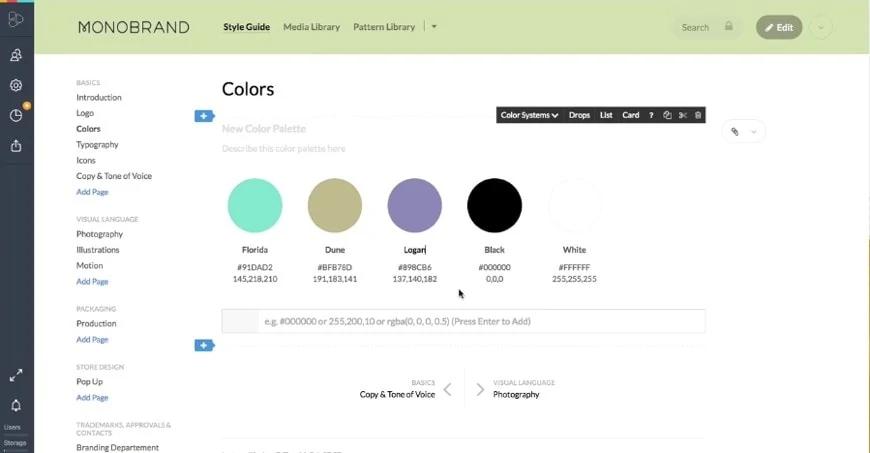
Freelance Branding Strategies
Building a distinct brand as a freelancer is essential for standing out in a competitive market. To effectively leverage your brand, immerse yourself in understanding your unique strengths and unique selling propositions (USPs). Create a personal mission statement that captures your essence and sets the tone for how you interact with clients. Remember, consistency is key—ensure your messaging resonates across all platforms, including your website, social media, and client communications. This alignment not only boosts your credibility but also fosters trust with potential clients.
To amplify your brand presence, consider these strategic elements:
- Visual Identity: Develop a logo and color palette that reflects your personality and professionalism.
- Online Portfolio: Showcase your best work paired with testimonials to create a compelling narrative.
- Networking: Engage with your industry peers online and offline to build relationships that can lead to referrals.
- Content Creation: Share valuable insights or industry-related content through blogs or social media to position yourself as an authority.
| Branding Element | Description |
|---|---|
| Logo | Your visual symbol representing your brand. |
| Color Palette | A cohesive set of colors that convey your brand’s tone. |
| Testimonials | Client feedback that lends authenticity to your services. |
| Social Proof | Evidence of your capabilities from colleagues or clients. |
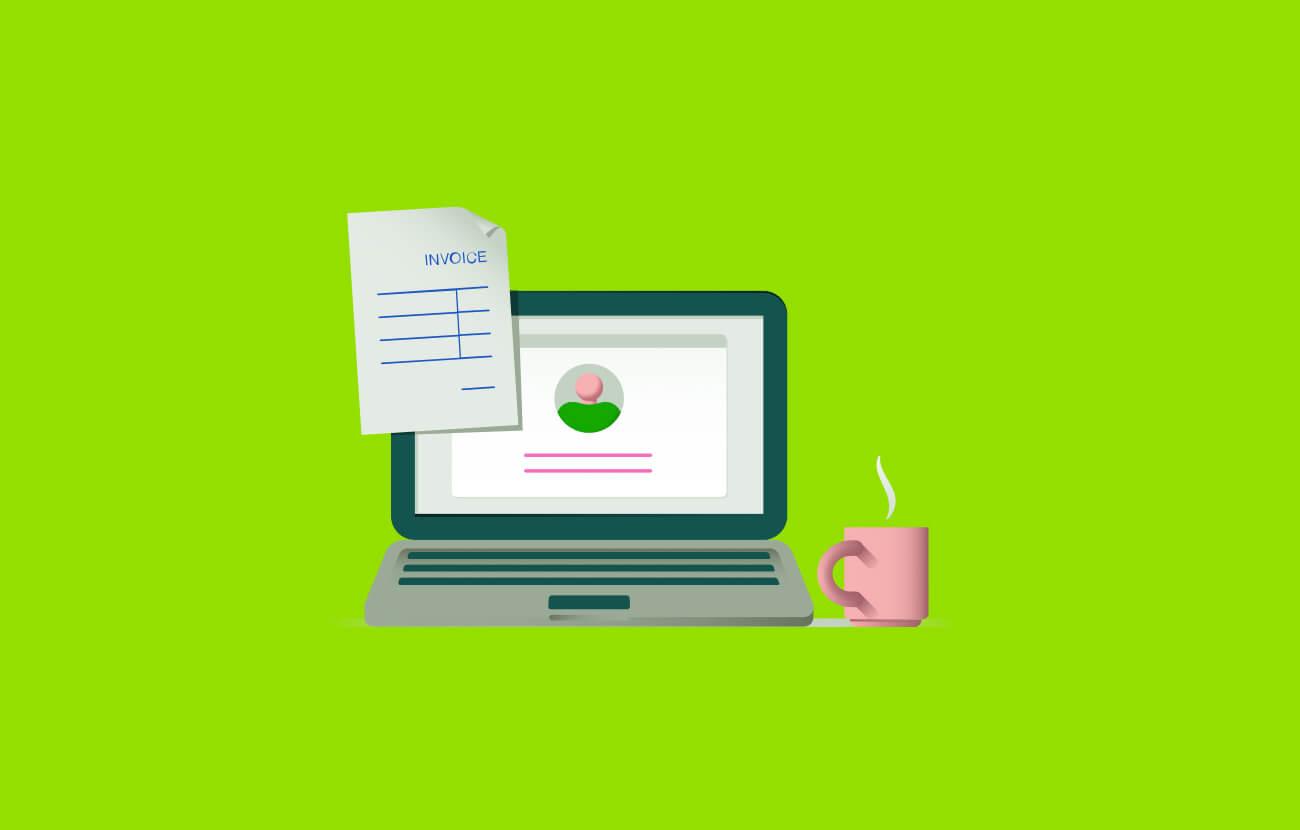
Freelancing in Graphic Design
In the dynamic world of graphic design freelancing, managing your time effectively can be a game changer. Establish a robust routine that allows for both creativity and productivity. Consider designating specific hours for creativity versus administrative tasks. This segregation can help you dive deep into your creative flow while ensuring that the business side of your operation doesn’t fall by the wayside. Here’s a simple structure you might follow:
- Mornings: Client communication and project planning
- Midday: Deep work on design projects
- Afternoons: Administrative tasks, marketing, and learning
Another efficient strategy involves using tools that enhance your time tracking capabilities. By employing software designed for freelancers, you can monitor how long tasks take, enabling you to make more accurate time estimates for future projects. Consider adopting a time block approach, which allows you to allocate set time periods for certain types of work. Here’s a quick reference table to keep track of your daily time allocation:
| Activity | Time Allocated |
|---|---|
| Client Communication | 1 hour |
| Design Work | 4 hours |
| Marketing Efforts | 1 hour |
| Learning/Skill Development | 1 hour |
| Breaks | 1 hour |

Freelance Personal Development
For freelancers, mastering time management is crucial to strike a balance between personal ambitions and project deadlines. To effectively manage your time, consider implementing strategies that promote focus and enhance productivity. A few effective techniques include:
- Set Clear Goals: Define what you aim to accomplish daily, weekly, and monthly to help maintain direction.
- Prioritize Tasks: Identify high-impact tasks and tackle them first. Use a system like the Eisenhower Matrix to categorize tasks by urgency and importance.
- Block Time: Dedicate specific blocks of time to different activities, reducing distractions and increasing your flow.
Additionally, utilizing tools and apps can streamline your workflow, allowing for more structured time management. Here’s a quick table highlighting some recommended resources for freelancers:
| Tool | Purpose |
|---|---|
| Todoist | Task management and prioritization |
| RescueTime | Tracking time spent on tasks |
| Toggl | Time tracking and reporting |

Freelance Income Diversification
Diving into multiple streams of income can not only relieve financial stress but also open new avenues for your skills. As a freelancer, consider leveraging the expertise you already possess or exploring adjacent fields that demand a similar skill set. For instance, if you’re a graphic designer, you might venture into web design or social media management. Diversification allows you to create a safety net, ensuring that if one client project wraps up, there are others to fall back on. Here are a few ideas to get you started:
- Freelance Writing: Blogs, articles, and content creation for websites.
- Online Courses: Teaching your craft through platforms like Udemy or Skillshare.
- Consulting: Offering expert advice in your industry to businesses.
- Digital Products: Creating and selling eBooks, templates, or design assets.
To effectively manage your time while capitalizing on these different income sources, track your engagements and ensure each project is planned out. Use tools like spreadsheets to list projects, deadlines, and income expectations. Here’s a simple table layout to help structure your freelance work:
| Project Type | Estimated Time (hrs/week) | Expected Income ($) |
|---|---|---|
| Graphic Design | 10 | 500 |
| Freelance Writing | 5 | 300 |
| Online Course | 7 | 700 |
| Consulting | 3 | 400 |

Freelance Career Growth
As you navigate the freelance landscape, mastering time management is essential for your growth and success. Effective time management not only enhances your productivity but also allows you to balance multiple clients and projects without feeling overwhelmed. Focus on establishing a structured routine that includes designated work hours, breaks, and even leisure time. This not only helps you stay organized but also sets clear boundaries, ensuring that work doesn’t seep into your personal life. Here are some strategies to implement:
- Set Clear Goals: Define short-term and long-term objectives for your freelance career.
- Prioritize Tasks: Use the Eisenhower matrix to distinguish between what’s urgent and important.
- Limit Distractions: Identify your biggest distractions and create strategies to minimize them.
Understanding your productivity patterns can also propel your career forward. Track how much time you spend on various tasks and identify your peak productivity hours. By doing so, you can allocate challenging tasks to when you are most focused, enhancing the quality of your work. A simple table can help you visualize your productivity:
| Time of Day | Productivity Level |
|---|---|
| Morning (8 AM – 12 PM) | High |
| Afternoon (1 PM – 4 PM) | Medium |
| Evening (5 PM – 9 PM) | Low |
By fine-tuning your time management skills, you will not only enhance your productivity but also create more opportunities for career advancement and client satisfaction. This holistic approach can significantly impact your reputation in the freelance community and allow for sustainable growth.
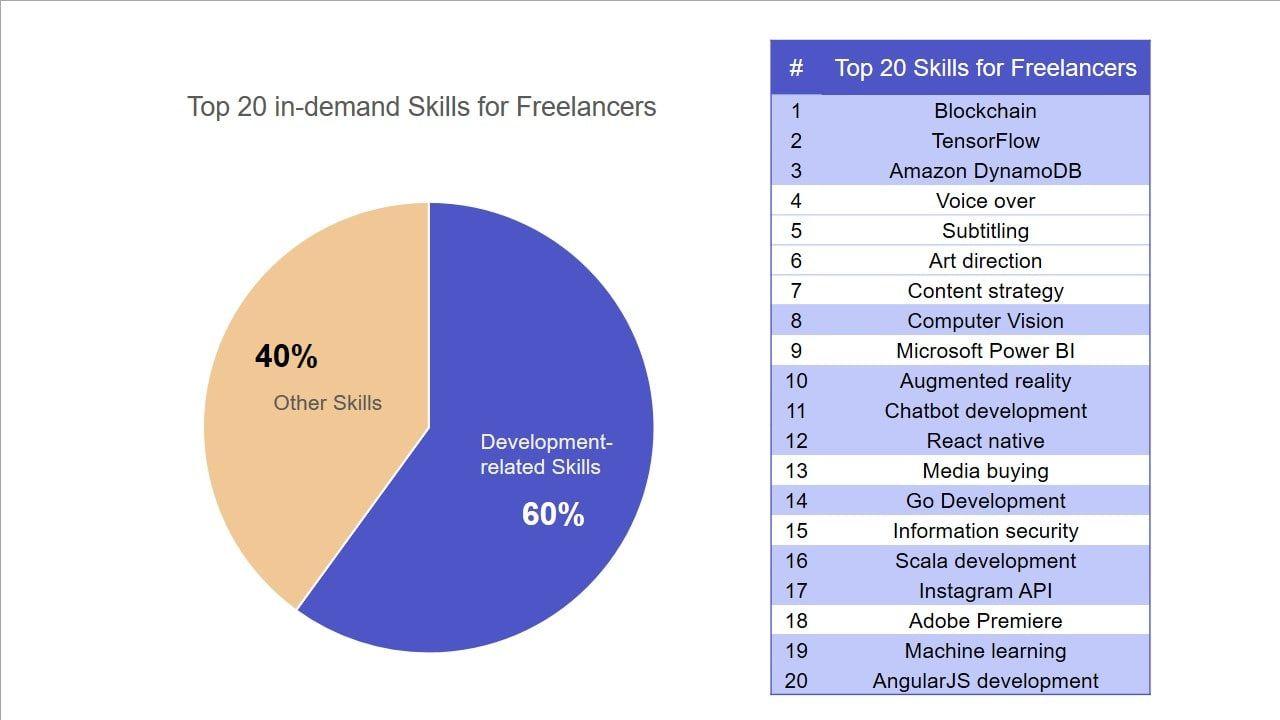
Freelance Market Trends 2024
The freelance landscape is continuously evolving, and as 2024 approaches, several key trends are emerging. First, remote work has solidified itself as the norm rather than the exception, allowing freelancers to collaborate seamlessly across borders. This global approach fuels competition but also opens doors for diverse opportunities. Niche specialization is another trend; freelancers are increasingly focusing on specific areas such as digital marketing, UX/UI design, or content creation, enabling them to command higher rates and establish a stronger personal brand. To navigate these shifts effectively, embracing new technologies and tools that enhance productivity is paramount.
Furthermore, the rise of gig platforms is reshaping how freelancers secure projects. Expect to see more platforms offering tailored services that cater to specific industries and skill sets. These platforms often provide robust features like project management tools, allowing freelancers to manage their time better while enhancing client communication. As freelancers adapt to these trends, they must prioritize work-life balance and develop consistent time management strategies to maintain productivity and avoid burnout. An organized approach to daily tasks can significantly influence their overall success in an increasingly competitive market.
Closing Remarks
As we wrap up our exploration of time management for freelancers, it’s clear that mastering your clock is not merely about squeezing more tasks into your day; it’s about crafting a rhythm that harmonizes productivity with personal well-being. Remember, each of us has our unique pace, and the key lies in finding what works best for you.
Embrace the power of planning, prioritize your tasks like a seasoned conductor leading an orchestra, and don’t shy away from the occasional encore—those well-deserved breaks that recharge your creativity. With the strategies shared in this article, you’re now equipped to turn fleeting minutes into meaningful moments.
So, take a deep breath, recalibrate your focus, and step confidently into your day. Your clock is not just a tool; it’s a canvas for your aspirations, a framework for your dreams. Whether you’re working on client projects, honing your craft, or simply enjoying life as a freelancer, remember that each tick of the clock is a quiet invitation to seize your time with intention. Here’s to your journey of mastering the art of time—one tick, one tock at a time.




